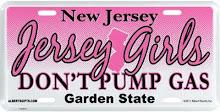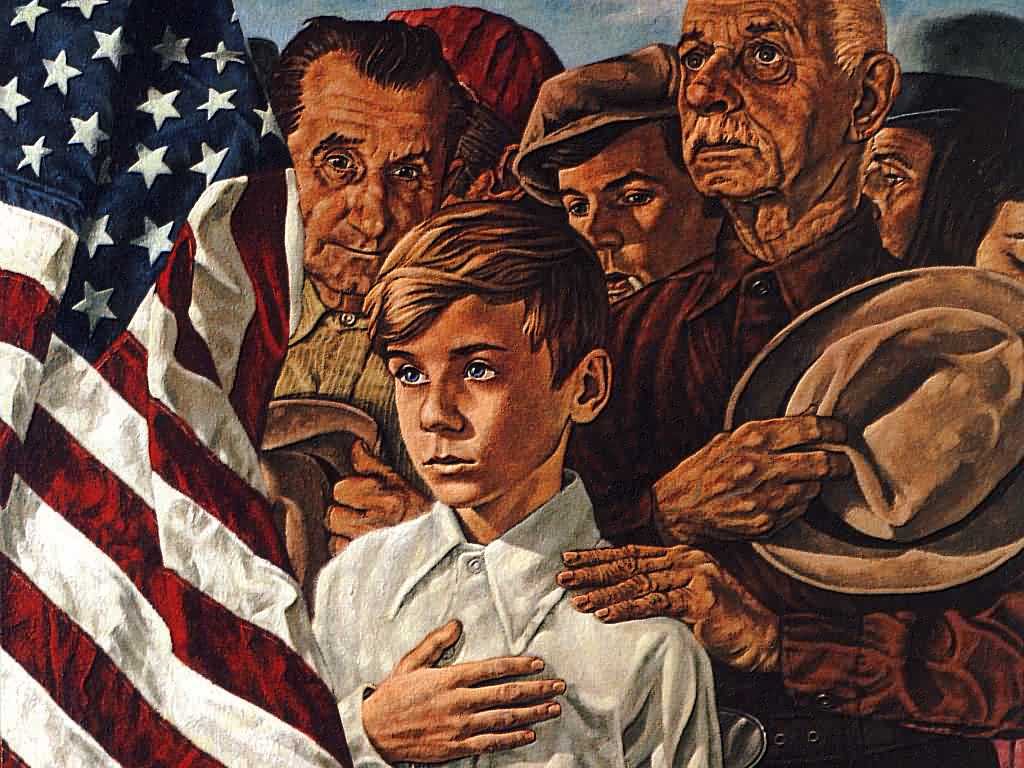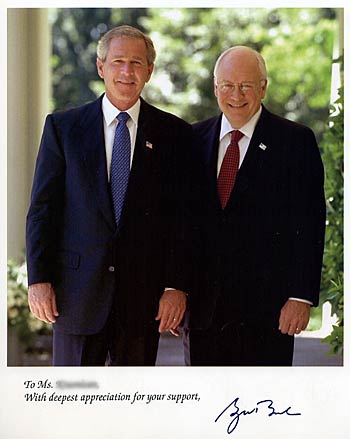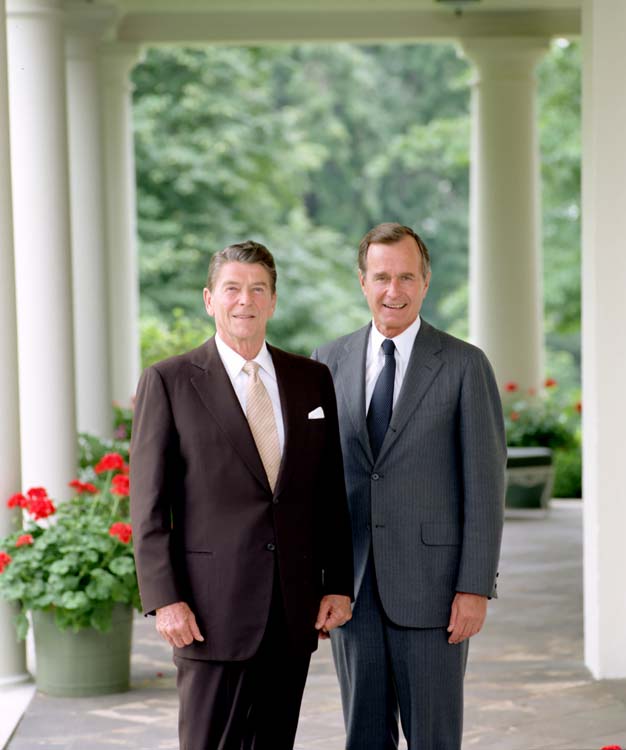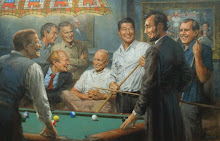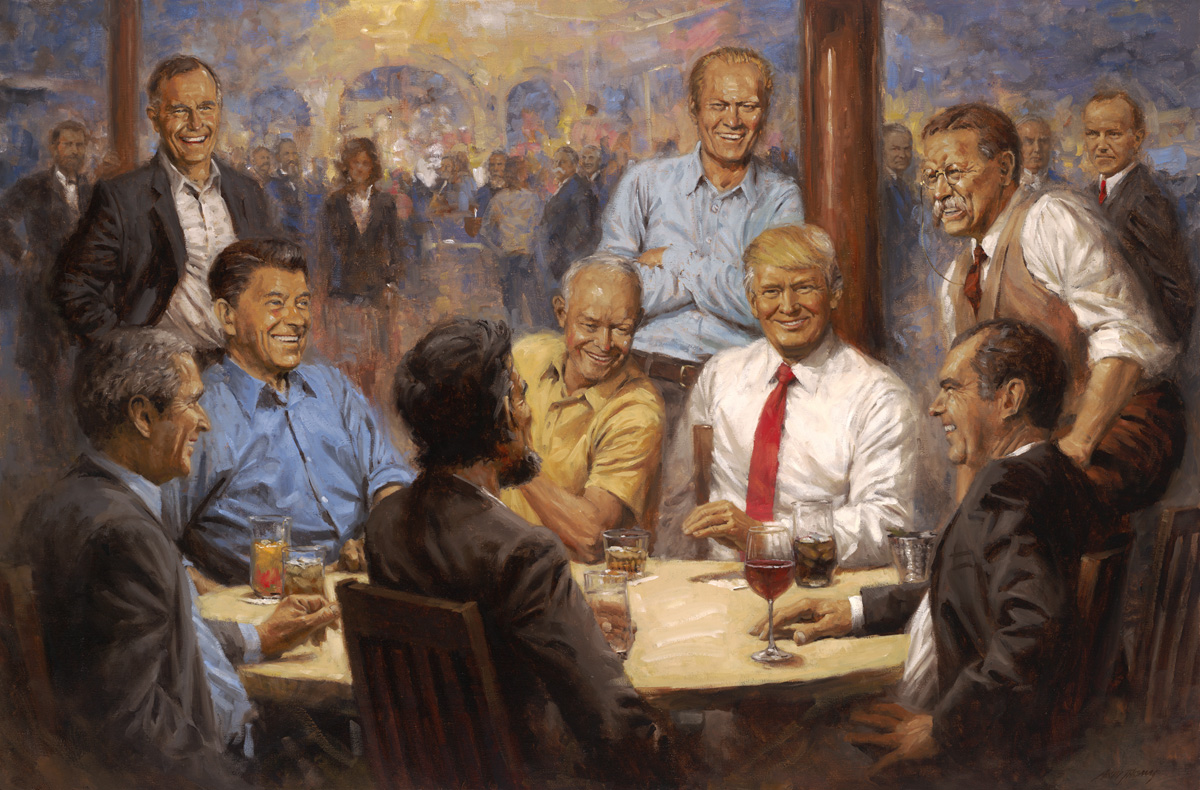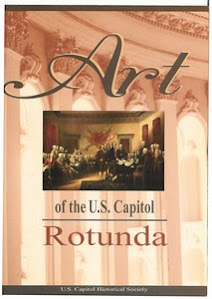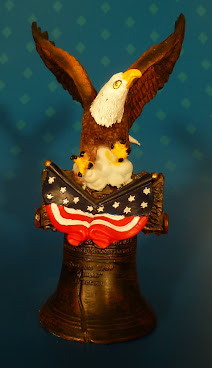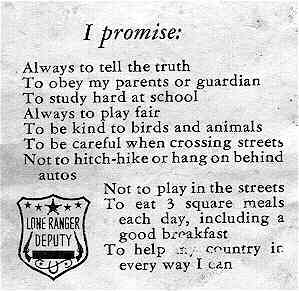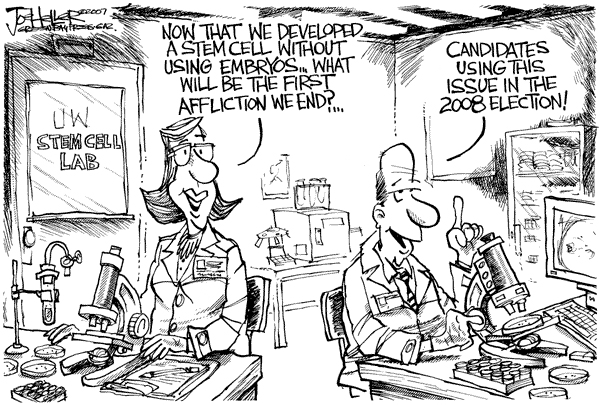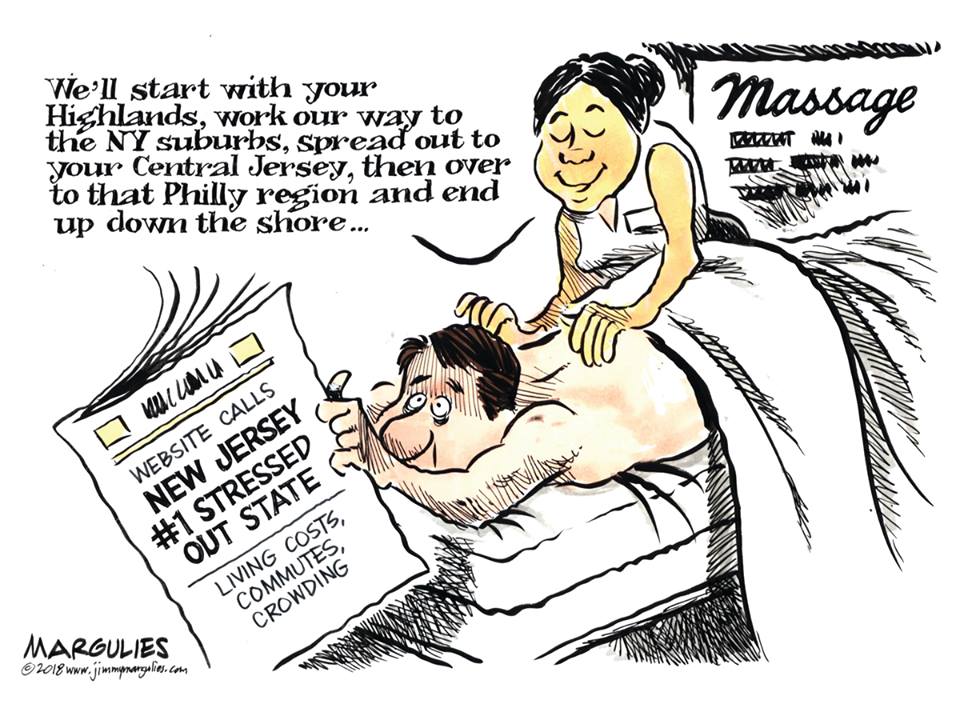Source: http://www.legacy.com/philly/DeathNotices.asp?Page=LifeStory&PersonID=103448382
ABRAMS
ARNOLD M., Feb. 13, 2008. Husband of Rene (nee Lave). Devoted father of David (Paula) Abrams, Lisa (Jeffrey) Licht and Steven (Tracy) Abrams. Proud Pop-pop of Lauren, Sara, Jared, Rachel, Zoey, Hailey and Remy. Relatives and friends are invited to Funeral Services Fri. 1 P.M. precisely, GOLDSTEINS' ROSENBERG'S RAPHAEL SACKS SUBURBAN NORTH, 310 Second St. Pike, Southampton. Int. Roosevelt Memorial Park. Family and friends are invited to return to the home of Lisa and Jeff Licht where Shiva will be observed through Sat. evening. Shiva will continue at the home of Steve and Tracy Abrams Sun. and Mon. Contributions in his memory may be made to the Division of Geriatric-Psychiatry, c/o The Jefferson Foundation, 925 Chestnut St.- Suite 110, Phila. PA 19107.
Published in the Philadelphia Inquirer & Philadelphia Daily News on 2/15/2008.
Source: http://miva.courierpostonline.com/miva/cgi-bin/miva?08obdetail.mv+ABRAMS,%2BARNOLD%2BM.+2a15a08
ABRAMS, ARNOLD M.
Feb. 13, 2008. Husband of Rene (nee Lave).
Devoted father of David (Paula) Abrams, Lisa (Jeffrey) Licht and Steven (Tracy) Abrams. Proud Pop-pop of Lauren, Sara, Jared, Rachel, Zoey, Hailey and Remy.
Relatives and friends are invited to Funeral Services Fri. 1 P.M. precisely, GOLDSTEINS' ROSENBERG'S RAPHAEL SACKS SUBURBAN NORTH, 310 Second St. Pike, Southampton, PA. Inter ment Roosevelt Memorial Park.
Family and friends are invited to return to the home of Lisa and Jeff Licht where Shiva will be observed through Sat. evening, Shiva will continue at the home of Steve and Tracy Abrams Sun. and Mon. Contributions in his memory may be made to the Division of Geriatric-Psychiatry, c/o the Jefferson foundation, 925 Chestnut St. - Suite 110, Phila. PA 19107
Published in the Courier Post 2/15/08.
ABRAMS
JACK MATTHEW, April 26, 2003, beloved husband of Lois (nee Greenberg) and the late Doris Mitnick Abrams; beloved father of Susan (Elliot) Wexler and Stuart (Debbie) Abrams; beloved stepfather of Marilyn Bell and Scott Bell; loving brother of Arnold (Rene) Abrams; loving grandfather of Josh, Dean, Gabrielle and Erik. Relatives and friends invited to Funeral Services Tues., 1 P.M. precisely, GOLDSTEINS' ROSENBERG'S RAPHAEL SACKS SUBURBAN NORTH, 310 Second St. Pike, Int. Roosevelt Memorial Park. Shiva will be observed at his late residence. Contributions in his memory may be made to a charity of donor's choice.
Published on April 28, 2003, Page , Philadelphia Inquirer, The (PA) and Philadelphia Daily News (PA)
Jack Matthew Abrams, 76, of Cherry Hill, owner of Germantown Plumbing for 15 years before becoming a sales representative for Central Brass Manufacturing Co., died Saturday of a heart attack at his second home in Ventnor. Mr. Abrams, who was born in Philadelphia's Germantown section, graduated from Germantown High School in 1944. He enlisted in the Navy in 1945 and served in the Pacific during World War II as a fireman on a tugboat. After the war, he owned Germantown Plumbing at 5020 Germantown Ave. from 1945 to 1960. He then went to work as a Philadelphia-area sales representative for Central Brass of Cleveland. He retired in 1998. He is survived by his wife of 22 years, Lois Greenberg; son Stuart; daughter Susan Wexler; stepdaughter Marilyn Bell; stepson Scott Bell; one brother; and former wife Doris Mitnick Abrams, to whom he was married from 1948 to 1979. Funeral services will be at 1 pm today at Goldsteins' Rosenberg's Raphael-Sacks Suburban Chapel, 310 Second Street Pike in Southampton. Shiva will be observed at his late residence. Contributions in his memory may be made to a charity of donor's choice.
Published on April 29, 2003, Page B09, Philadelphia Inquirer, The (PA)
Source: http://miva.courierpostonline.com/miva/cgi-bin/miva?08obdetail.mv+ABRAMS,%2BJACK%2BMATTHEW+4a28a03
ABRAMS, JACK MATTHEW
Age 76, of Cherry Hill, NJ. Died April 26, 2003.
He owned and operated Germantown Plumbing prior to becoming a sales rep for Central Brass. He was a Naval Veteran of WWII. He was a Mason-Max Sanders Brotherhood Lodge.
Husband of Lois (nee Greenberg) and the late Doris Mitnick Abrams. Father of Susan (Elliot) Wexler and Stuart (Debbie) Abrams. Stepfather of Marilyn Bell and Scott Bell. Brother of Arnol (Rene) Abrams. Grandfather of Josh, Dean, Gabrielle and Erik. Contributions in his memory may be made to a charity of the donor's choice.
Funeral services will be held Tuesday, 1:00 PM at GOLDSTEINS' ROSENBERG'S RAPHAEL-SACKS SUBURBAN CHAPEL, 310 Second Street Pike, Southampton. Interment Roosevelt Memorial Park, Trevose.
Courier Post Publication date: 4/28/03
Friday, February 15, 2008
Obituary - Abrams
Posted by Joyce Kavitsky at 2/15/2008 12:35:00 PM 0 comments
Wednesday, February 13, 2008
The VAT: Menace to free trade by Jerome Corsi
Source: http://www.worldnetdaily.com/news/article.asp?ARTICLE_ID=54076
Posted: February 03, 2007
1:00 am Eastern
The impact of the Value Added Tax, or VAT, on international trade is a complicated aspect of global commerce that is generally only comprehended by experts. Yet, the impact of the VAT may be the single most important variable in explaining U.S. balance of trade deficits that are spiraling out of control ? to the detriment of both U.S. manufacturing and the continuing validity of the U.S. dollar itself.
The 2006 U.S. trade deficit is estimated to exceed $760 billion, while last year China also came to hold an historically high $1 trillion in foreign exchange reserves, $700 billion of which was held in U.S. dollar assets.
Simply put, the average United States citizen can no longer afford not to understand the VAT, especially now, in an era where the World Trade Organization dominates our international trade agenda and where NAFTA has morphed into NAFTA-plus, as demonstrated by the Security and Prosperity Partnership of North America, which President Bush declared with Mexico and Canada at the Waco, Texas, summit of March 23, 2005.
The modern VAT was created by French economist Maurice Laur? in the 1950s. The basic concept is that a "value added" tax is imposed at each stage in the chain of production of a good or service.
The goal is for the VAT to be charged to the consumer at the point of sale, such that the amount of the VAT ends up being calculated as a percentage of the final value of the good or service. The VAT charged the consumer is not reimbursed to the consumer, so at the final point of retail purchase the government gets to keep the VAT once and for all.
A VAT and a sales tax are both considered "indirect" taxes that ultimately are shifted to the consumer. Income taxes, in contrast, are considered "direct" taxes in that the tax cannot be shifted to someone else other that the person earning the income. The main difference between a VAT and a sales tax is that the VAT is applied at each stage of production, whereas sales taxes are usually only imposed once, at the final point of sale.
For our discussion, we do not need to master all the intricacies of exactly how the VAT works in practice. What we are concerned about is that in international trade there is a differential between how indirect taxes and direct taxes are treated, and that differential puts the U.S. at a decided disadvantage.
The United States does not use a VAT system. Some 137 countries, including every major U.S. trading partner such as the EU countries, China, Canada and Mexico, have VAT systems.
Here are the crucial points we need to understand:
- Exports from VAT countries enjoy rebates of VAT taxes that goods sold domestically in those same VAT countries would be subject to, while U.S. exports receive no such rebate of federal taxes and much smaller relief from state sales taxes.
- The problem is compounded when we realize that imports into VAT countries are subjected to VAT at the border, while imports into the U.S. are not taxed at the border.
- As a result, U.S. exports are taxed twice, while exports from VAT countries are traded free of certain types of taxes.
A simplified example (which excludes movement expenses and customs duties) helps understand the reason U.S. goods are disadvantaged by VAT systems.
A U.S. car that sells for $23,000 in the U.S. includes profit and covers various tax obligations of the producer, as well as pension costs for workers. When that car arrives in Germany, a 16 percent VAT will be added on to the $23,000 price, meaning that the car will be sold in Germany for $26,680.
Yet, no tax comparable to a VAT is imposed on a German car imported into the United States. Consider the example of a German car that is sold in Germany for $23,000 after the 16 percent VAT is imposed. The example is constructed to compare a U.S. car manufactured in the U.S. and sold in the U.S. that is roughly price competitive with a German car manufactured in Germany and sold in Germany.
The differential VAT taxation issue becomes a problem when the U.S. manufacturer suffers price disadvantages when the U.S. car is exported to Germany to be sold in Germany, compared to the price advantages the German manufacturer receives when the German car is exported to the U.S. to be sold in the U.S.
When the German car is imported to the U.S., Germany rebates the 16 percent VAT to the manufacturer, allowing the export value of the car to be $19,827.59. Moreover, when the German car is imported to the U.S. no U.S. tax comparable to the VAT is assessed, so the car is allowed to enter the U.S. market at a price under $20,000.
In this example, U.S. producers are disadvantaged two ways. On export, U.S. product that otherwise sells for the same price in domestic markets starts off with a disadvantage of $3,680 because of the VAT. At the same time, the German car, which sells at home for the same price as the U.S. car in America, is sold to the U.S. for a price which is $3,172.41 less than the U.S. car. When you add these disadvantages, U.S. car companies face disadvantages at home and abroad that can be measured as $6,852.41.
In effect, the rebate of the VAT to German exports serves as a German subsidy for exports, while the imposition of a VAT on the U.S. car imported to Germany serves as a German tariff imposed on U.S. imports. Still, the VAT is not defined in our free trade agreements either as a subsidy or a tariff, even though U.S. manufacturers are demonstrably disadvantaged both in exporting to VAT countries and in competing with VAT-country exports in the U.S. market.
None of this disadvantage applies to one VAT country importing into another VAT country, because typically the VAT is rebated in all countries when the good exported for sale in the foreign market.
Being the only major international trade country without a VAT, the U.S. is uniquely disadvantaged by the VAT system differential. The U.S. simply has no border-adjustable mechanism that can rectify the disadvantage that is imposed by VAT rebating to VAT country exporters and VAT cost imposition to non-VAT country exporters such as the U.S.
The VAT differential can end up disadvantaging U.S. exports by imposing what amounts to a considerable penalty (with VAT rates ranging up to 25 percent depending on the country) on the U.S. manufacturer, while advantaging the foreign exporter into the U.S. by a comparable price subsidy. In effect, VAT systems function as trade subsidies for exporters and as trade tariffs for importers, although VAT preferences are defined as neither "subsidies" nor as "tariffs" under the terms of international trade agreements, including both NAFTA and the WTO.
On May 17, 2005, testifying to the Subcommittee on Trade of the House Committee on Ways and Means, attorney Terence Stewart of the Washington firm Stewart and Stewart estimated the impact of differential taxation as follows:
On the issue of differential treatment of tax systems, the U.S. is seriously disadvantaged by the application of WTO rules on taxes. With 137 countries applying a VAT tax and a worldwide VAT tax advantage of 15 percent, the U.S. faces up to $450 billion total disadvantage to U.S. exports ($180 billion) and export subsidies to import competition ($270 billion).
Simply put, the VAT differential puts U.S. exporters in a huge hole from which it is almost impossible to dig out. At the same time, the VAT differential gives those who import into the U.S. such a huge edge that their dominance of our domestic market is virtually assured from the start.
Within NAFTA, Stewart estimates that in 2005, we had a $40.6 billion VAT disadvantage with Mexico and a $33 billion VAT disadvantage with Canada. Our largest VAT disadvantage in 2005 was $47.9 billion with China.
"Every major trading country in the world economy except for the U.S. has a VAT system," notes Auggie Tantillo, executive director at the American Manufacturing Trade Action Coalition, in an interview with this writer. As Mr. Tantillo explained:
The important thing to understand is that the VAT disadvantage is a structural impediment or distortion, just like the currency manipulation China currently exploits by refusing to allow the value of their currency to freely float on world currency exchanges. The VAT differential is not simply a tangential, frivolous or superficial thing that a few countries do here or there, just a minor irritant. The VAT differential is a core, driving aspect as to why U.S. companies find themselves continuously at a disadvantage. If you extrapolate to the next step, the VAT differential is a core reason for why we see this escalating growth in the U.S. trade deficit on an annual basis.
Ironically, Mr. Tantillo argues that the VAT differential is a key reason many U.S. companies decide to move their manufacturing offshore, preferring to export into the U.S. market rather than to operate as U.S. domestic producers.
Mr. Tantillo elaborated these points in our interview:
When you add everything up and start to look at the cumulative effect, the board of a U.S. company sitting around a table has to say, "We can cut our labor costs by 'x' percent, we can get rid of our health care, we don't have to produce a pension plan, and then we have this VAT situation where our taxes are rebated to us when we ship to the U.S., the market we want to impact anyway, so why do we stay here in the United States? Why not move our manufacturing to Asia?" The economic analysis just becomes compelling for many U.S. companies.
In other words, the VAT differential functions as an additional international trade structural incentive for U.S. companies to move manufacturing to foreign countries where they can participate in the VAT advantages as importers into the U.S. market. The point is not simply that wages are less in countries such as Mexico and Canada; both countries additionally possess structural advantages in international trade, including importantly the differential on how VAT systems work.
As explained by Tantillo, "It's time for the U.S. to confront the WTO and NAFTA and say that we can no longer abide by a structural distortion that is massively and adversely impacting our manufacturing base."
Jerome R. Corsi is a staff reporter for WND. He received a Ph.D. from Harvard University in political science in 1972 and has written many books and articles, including his latest best-seller, "The Late Great USA." Corsi co-authored with John O'Neill the No. 1 New York Times best-seller, "Unfit for Command: Swift Boat Veterans Speak Out Against John Kerry." Other books include "Showdown with Nuclear Iran," "Black Gold Stranglehold: The Myth of Scarcity and the Politics of Oil," which he co-authored with WND columnist Craig. R. Smith, and "Atomic Iran.
EMAIL JEROME R. CORSI | GO TO JEROME R. CORSI ARCHIVE
Regional Tariff & Tax Information
Source: http://usaexportimport.com/regional_tariffs.php
APEC
The members of the Asia Pacific Economic Cooperation (APEC) have placed their tariff schedules in the APEC Tariff Database on the Internet. Members include many Asian economies, the United States, Canada, Mexico, and Chile. You will be asked to register in order to use the site, but it is a free service. This section helps US exporters identify which column rates apply to U.S. products, lists the costs against which the tariff and tax rates are applied, and lists additional taxes collected at the border.
Australia
U.S. products subject to the general duty rate (usually the first and highest rate of several shown for a given product). The general rate has no DC, DCS, CAN or other preferential geographic designation before the duty rate.
-- The duty is applied on the FOB value.
-- 10 percent Goods and Services tax applied on FOB + duty.
Bahrain
-- Customs duties are imposed on the CIF value:
-- 5 percent on foodstuffs and non-luxuries
-- 10 percent on luxuries
-- 20 percent on cars and boats
-- 25 percent on fully-processed corn and palm oil imports, and other items produced in Bahrain.
-- 70 percent on cigarettes and tobacco products
-- 125 percent on alcoholic beverages
-- In principle, no tax or duty is payable on imports of raw materials or semi-manufactured goods for manufacture or on imports required for development projects (but not including spare parts).
Bahrain Directorate of Customs and Ports
Phone: 011-973-727178
Bolivia
-- Bolivia assesses a 10 percent tariff on all goods except those classified as capital goods, books, and publications.
-- Capital goods, found only in Harmonized System chapters 84, 85, 86, and 97, are assessed a 5 percent tariff. Books and publications are charged a tariff of 2 percent.
-- Tariffs are assessed on the CIF value.
-- A Value Added Tax of 14.94 percent is imposed on the CIF + duty value.
-- A Customs Warehouse Fee of 0.5 percent is imposed on the CIF value.
-- Additional customs charges total some $50-$60.
-- Carnets are not accepted. Temporary entry of goods is permitted, but a bond may be required.
Brunei
-- Single column tariff schedule; tariffs applied on the CIF value.
-- No other taxes are known.
Canada
U.S. products meeting the North American Free Trade Agreement (NAFTA) rules of origin (except some agricultural products) are duty free effective January 1, 1998. (Refer to 'Applicable Preference Tariff' column, AUST.). For products that do not meet the NAFTA rule of origin, use the AMFN column.
--For NAFTA rates which apply to qualifying U.S. products only, use the "Applicable Preferential Tariffs" column and look for the designation "UST."
--For rates which apply to products from the United States which do not qualify under NAFTA, use the "MFN Tariff" column. For information on how to qualify products under NAFTA see our NAFTA database.
--Canada applies duties on FOB value.
--The Federal Goods and Services Tax (GST) is 7 percent applied on the FOB + duty value.
--New Brunswick (15 percent HST--includes the provincial sales tax plus the 7 percent federal GST),
Newfoundland (15 percent HST--includes the provincial sales tax plus the 7 percent federal GST), and Nova Scotia (15 percent HST--includes the provincial sales tax plus the 7 percent federal GST) collect provincial taxes at the border. As of April 1, 1999 Quebec and Ontario (15 percent HST--includes the provincial sales tax plus the 7 percent federal GST) collect provincial taxes at the border on personal, not commercial, shipments.
Chile
--Single column tariff schedule; tariffs applied on the CIF value.
--Value Added Tax of 18 percent is applied on the CIF + duty value.
-- Chile imposes a flat 7 percent import duty on most traded products, except for some agriculture products, which may be subject to quotas or prohibition. Most used vehicles cannot be imported. For duties on agricultural and food products contact the TIC.
-- Gifts are subject to duties and taxes; the first US$600 are exempt from duties.
-- Carnets are not accepted. Temporary entry is permitted, but a bond may be required.
Customs Service of Chile
Phone: 56-32-200-500
Fax: 56-32-23-212-841
China
--U.S. products subject to duty in Column I (Most-Favored Nation); duty applied on the CIF value.
--Value Added Tax of 17 percent applied on the CIF + duty value; 13 percent VAT on foodstuffs, some fuels and books.
Common Market of Eastern and Southern Africa (COMESA)
The COMESA member countries are: Angola, Burundi, Comoros, Democratic Republic of the Congo, Eritrea, Ethiopia, Kenya, Madagascar, Malawi, Mauritius, Namibia, Rwanda, Seychelles, Sudan, Swaziland, Uganda, Zambia and Zimbabwe.
Costa Rica (Spanish-language website)
El Salvador (Spanish-language website)
European Union (Austria, Belgium, Denmark, Finland, France, Germany, Greece, Ireland, Italy, Luxembourg, Netherlands, Portugal, Spain, Sweden, United Kingdom)
For more information about the European Union tariff schedule on-line, please visit Trade.gov.
Guatemala
(Spanish-language website)
Honduras
(Spanish-language website)
Hong Kong
Hong Kong is a duty free territory. No import duties are charged on any products from any source, although both foreign and domestic products face excise taxes on a limited number of products. For more information see our Asia database.
--Hong Kong levies a 0.035 percent documents handling fee,
which is applied on the CIF value.
--Hong Kong and China are separate customs territories with
separate tariff schedules.
--Hong Kong requires an import or an export license for
all optical disc manufacturing equipment.
Hong Kong Customs & Excise Department
6 - 9th Floors, 38 Pier Road
Central, Hong Kong
Phone: (852) 2852-1411
Iceland
-- Go to "manuals." Click on "Table of Contents"
to browse by chapter or "Search" to do a keyword
search.
-- Tariff applied on U.S. products in "A" column;
tariff applied on CIF value.
-- Value Added Tax: 24.5 percent on most products; applied
on duty paid value.
-- Excise Tax: Levied on motor vehicles (including motor
cycles), up to 37 percent; sugar and chocolate confectionery,
7 percent; soft drinks and preparations for making soft
drinks and beer, 17 percent; potatoes, 50 percent; goods
made from potatoes, 40 percent.
Indonesia
-- Single column tariff schedule; rates applied on the CIF
value.
-- Value Added Tax of 10 percent applied on the CIF + duty
value.
-- 10-40 percent Sales Tax on "luxury items."
Japan
As of January 1, 1998, U.S. products face the rate in the
WTO 2 column; if this figure is in parentheses, use the
figure in the general column; rates are applied on the CIF
value.
-- Consumption tax of 5 percent is applied at the retail
level. If the imported product is shipped directly to the
end user, the tax is applied at the time of entry on the
CIF + duty value.
Jordan
English-language website with the complete tariff schedule for goods imported into Jordan and other customs information.
-Value Added Tax of 13% applied on CIF + duty value.
Kuwait
-- The tariff applied on most imports is 4 percent.
-- The tariff applied on cigarettes and tobacco products
is 70 percent.
Malaysia
-- U.S. products subject to rates under "Import"
column, applied on the CIF value.
-- Sales Tax varies by product--nil, 5, or 10 percent (10
percent being the most frequent) applied on CIF + duty.
Malta
-- Go to "The Integrated Tariff." If you do not
know the full Harmonized System number, search by description.
-- Duty, VAT, and Levy are levied on the CIF value. Rates
are given in "The Integrated Tariff.
Mexico
The tariff schedule on the APEC Tariff Database gives the Most Favored Nation (MFN) rates only. For information on tariff rates applied to U.S. products meeting the North American Free Trade Agreement (NAFTA) rules of origin, call the Trade Information Center. For information on how to qualify products under NAFTA click here.
-- Tariff rates are applied on the CIF value (non-NAFTA
product) or FOB value (NAFTA product).
-- Value Added Tax of 15 percent is applied on the CIF value
(non-NAFTA product) or FOB value (NAFTA product).
-- The VAT is 10% on US-Mexico border regions. Drugs are
not subject to the VAT.
-- A 0.8 percent Customs User Fee is applied on the CIF
value of non-NAFTA products. Click here for details.
Morocco
-- The first column indicates the duty rate for products
from the United States. Tariffs are applied on CIF value.
-- The second column indicates the Import Tax, applied on
CIF + duty.
Mozambique
-Surcharge of 17% on all products applied on CIF + duty.
- $50 customs fee charged by Mozambique Customs on each
shipment.
-Variable excise tax on alcohol, tobacco, automotives, and
luxury goods applied on CIF.
New Zealand
-- U.S. products subject to tariff rates in Column I (general
rate); tariff applied on the FOB value.
-- Sales tax of 12.5 percent is applied at the retail level.
If the imported product is shipped directly to the end user,
the tax is applied at the time of entry on the CIF + duty
value.
Nicaragua (Spanish-language website.)
Niger
-- Tariffs applied on U.S. products: "droit de douane"
column; tariffs applied on CIF value.
-- Value Added Tax : "taxe sur la valeur ajoutee"
column
-- Statistical Tax: "redevance statistique" column
-- Community Solidarity Levy: "prelevement commaunitaire
de solidarite" column
-- Trade and Industry Profit tax: "benefice industriels
et commerciaux" column
-- Customs Computer Processing fee: "redevance informatique" column
-- Reduced - "reduite"
Norway
-- Click on "Naeringslivs- informasjon," then
"Tolltariffen," then "ausnill/ kapitler"
-- Select tariff chapter desired. The tariff has four columns,
right to left
1.)Tariff Number;
2.) Description of Goods;
3.) Rate of Duty; percent ad valorem or Norwegian Crowns/kilogram
4.) Units for measures of quantity
-- Duties are charged on the CIF value of the shipment.
-- The Norwegian value added tax is levied on most imports
of industrial products. The 23 percent rate is charged on
the duty paid value.
Papua New Guinea
-- Single column tariff schedule; rates applied on the CIF value.
-- No other taxes known.
Philippines
-- Single column tariff rate by year; rates applied on the CIF value.
-- Value Added Tax of 10 percent applied on the CIF + duty
value.
Qatar
-- The tariff assessed on most goods is 4 percent.
-- The tariff assessed on steel is 20 percent.
-- The tariff assessed on alcoholic beverages is 100 percent.
-- Imports of pork and its derivatives are prohibited.
Singapore
-- Single column tariff applied on the CIF value; if the
column is blank, the tariff rate is zero.
--Tariff and tax information can also be found at http://www.gov.sg/customs/ (click on "For Traders")
-- Sales Tax of 3 percent applied on the CIF + duty.
-- Singapore applies duties only on tobacco products, alcoholic beverages, gasoline, and motor vehicles. The import duty on all other products is zero.
-- For tariff information on tobacco, alcoholic beverages,
gasoline, and vehicles use the APEC Tariff Database on the
Internet or contact the Trade Information Center.
Singapore
Customs & Excise Department
Phone: (65) 272-8222
Fax: (65) 250-8663
South African Customs Union
Tariff information for Botswana, Lesotho, Namibia, South Africa, and Swaziland) can be found at the above website. SACU members have a common external tariff, so the South African tariff schedule can be used as a proxy for the tariffs applied by each member country to U.S. products.
Botswana
-- Tariffs applied on the CIF value.
-- Value Added Tax of 10% applied on the CIF + duty value.
Lesotho
-- Tariffs applied on the CIF value.
-- Value Added Tax of 10% applied on the CIF + duty value.
Namibia
-- Tariffs applied on the CIF value.
-- Value Added Tax of 8% applied on the CIF + duty value.
South Africa
-- Tariffs applied on the FOB value.
-- Value Added Tax of 14% applied on FOB + duty value.
Swaziland
-- Tariffs applied on the CIF value.
-- A Surcharge (amount unknown) may be levied on the CIF + duty value.
South Korea
-- Single column tariff; where no rate is shown, use the nearest preceding rate.
-- Tariffs are applied on the CIF value.
-- Value Added Tax of 10 percent applied on the CIF + duty value.
Taiwan (Chinese Taipei)
-- U.S. products subject to tariffs in Column II (Most Favored Nation); if no rate is shown in Column II, use the Column I rate.
-- Tariffs are applied on the CIF value.
-- Port charge of 0.5 percent is applied on the CIF value for shipments by sea.
-- Value Added Tax of 5 percent is applied on the CIF value.
Thailand
-- Thailand is a member of APEC, but has not placed its tariff schedules in the APEC Tariff Database. To obtain tariff rates for Thailand, contact the Trade Information Center.
Posted by Joyce Kavitsky at 2/13/2008 06:07:00 PM 0 comments
Sunday, February 10, 2008
China mega-port catalyst for NAFTA Superhighway: North America about to be hit by tsunami of Far East goods By Jerome R. Corsi
Source: http://www.worldnetdaily.com/news/article.asp?ARTICLE_ID=57590
Posted: September 13, 2007
1:00 am Eastern
WorldNetDaily.com
Yangshan |
The Chinese deep-water port at Yangshan, near Shanghai, provides ample evidence North America is about to be hit by a tsunami of containers from China.
Yangshan is a reclaimed island the size of 470 soccer fields that lies in the East China Sea Port, offshore from Shanghai.
According to Bloomberg News, the Chinese have invested $15 billion to develop Yangshan, currently the largest port in China.
Currently handling 20 million containers a year, Yangshan is expected by 2010 to operate up to 30 berths, capable of exporting 30 million containers a year, with the vast majority destined for North America.
The Chinese developed Yangshan to accommodate the largest post-Panamax megaships now being constructed, with a capacity to carry up to 12,500 containers, three or four times the size of container ships now operating.
Yangshan Port is connected to the mainland by the 20-mile long Donghai Bridge.
As a clear indication of globalism's impact on the U.S. economy, international trade has grown from 13 percent of the U.S. Gross Domestic Product in 1990, to 24 percent in 2000, with projections of 30 percent by 2010, according to Andrew Goetz and Sutapa Bandyopadhyay, transportation economists at the University of Denver.
The Emma Maersk |
Goetz and Bandyopadhyay observe that until now, most of the foreign trade enters the U.S. through containers delivered to West Coast ports, including Los Angeles and Long Beach, with the containers "transferred to rail cars and trucks for distribution to inland load centers and eventually to wholesale and retail outlets throughout North America."
With the West Coast ports "sagging from the weight" of the massive increase anticipated in containers coming from China, Goetz and Bandyopadhyay suggest the transportation infrastructure of North America is being transformed, with a plan of opening new international trade "gateways," including deep-water ports in Canada and Mexico, as well as developing advanced truck-train transportation infrastructure, including newly configured north-south transportation corridors connecting the U.S. with Mexico and Canada.
WND previously reported plans to deepen and widen the Panama Canal so post-Panamax container ships can access U.S. ports such as New Orleans, Houston and Corpus Christi.
In 2005, the largest container ships carried an average of less than 2,500 containers. Today, megaships containing 9,500 containers are in operation. The Emma Maersk, one of the largest container ships, is over four football fields long (1,300 feet) and capable of handling 12,500 containers, stacked in 22 rows across its deck.
A YouTube.com video showing the Emma Maersk at sea gives an idea of the megaship's magnitude.
According to the foreign trade statistics maintained by the U.S. Census Bureau, the U.S. imbalance of trade with China is in the billions and growing every year, from a deficit of approximately $162 billion in 2004, to $202 billion in 2005, and $233 billion in 2006.
China now holds $1.3 trillion in foreign exchange reserves, 80 percent of which is held in U.S. dollar assets, the largest amount of foreign exchange currency ever held by any country in the world.
As WND reported, repeated visits of top Bush administration bureaucrats, including Secretary of Treasury Henry Paulson and Federal Reserve Chairman Ben Bernanke, have failed to get China to eliminate unfair trade practices, including subsidizing its currency.
Alan S. Blinder, a Princeton University economist who was former Federal Reserve Board vice chairman, told the Wall Street Journal in an interview reported March 28 that the U.S. was at risk of 40 million jobs being shipped out of the country to outsourcing in the next decade or two.
The Wall Street Journal reported 40 million jobs lost were more than double the total of U.S. workers employed in manufacturing today.
Blinder was a top adviser to President Clinton whose "free trade" views led him to strongly recommend the passage of NAFTA, the North American Free Trade Agreement.
WND also reported President Bush, in response to a question at the press conference concluding the third summit of the Security and Prosperity Partnership in Montebello, Quebec, Aug. 21, ridiculed as "conspiracy theory" the idea SPP could develop into a North American Union or promote the development of a NAFTA Superhighway.
Yet, WND has documented plans by Transport Canada, the counterpart of the U.S. Department of Transportation, to build an Asia-Pacific Gateway Corridor linking deep-water ports in British Columbia in a continental transportation infrastructure aimed at taking a share of the rapidly developing Chinese container market for Canada.
WND also reported a Transport Canada announcement that Ontario and Quebec have signed a memorandum of understanding to seek a public-private partnership to finance a segment of the Canadian Continental Gateway and Trade Corridor, according to the dictates of Canada's National Policy Framework for Strategic Gateways and Trade Corridors.
WND reported the official website of the Mexican northeastern state of Nuevo Leon reports its governor, Jose Natividad Gonzales Paras, has actively discussed with numerous U.S. government officials ? including Texas Gov. Rick Perry, Secretary of Transportation Mary Peters, and Secretary of State Condelezza Rice ? the extension of the Trans-Texas Corridor into Mexico to create what Mexico is calling a "Trans North America Corridor."
WND also has documented plans the Texas Department of Transportation has finalized and disclosed on its website to build the four-football-fields-wide Trans-Texas Corridor.
Are you a representative of the media who would like to interview the author of this story? Let us know.
Related offers:
Get a first-edition copy of Jerome Corsi's "The Late Great USA" autographed for only $19.95 today
Get "Taking America Back," Joseph Farah's manifesto for sovereignty, self-reliance and moral renewal
Get Tom Tancredo's new book, "In Mortal Danger," from the people who published it ? WND Books
Previous stories:
Canada preparing ports for NAFTA Superhighway
NAFTA Superhighway plans advance south
Name changed to hide 'Superhighway'?
Bush doesn't deny plans for N. American Union
The Nation cover story denies Superhighway
Military aid to Mexico on SPP summit agenda
3rd SPP summit shrouded in secrecy
Secret memo: One-world agenda dominates SPP summit
10,000 protesters expected at North America summit
Bill paves way for Canada's 'disappearance'
Protesters to converge on North America summit
Commerce chief pushes for 'North American integration'
Idaho lawmakers want out of SPP
House resolution opposes North American Union
Residents of planned union to be 'North Americanists'
Congressman battles North Americanization
North American Union leader says merger just crisis away
'Bush doesn't think America should be an actual place'
Mexico ambassador: We need N. American Union in 8 years
Congressman: Superhighway about North American Union
'North American Union' major '08 issue?
Resolution seeks to head off union with Mexico, Canada
Documents reveal 'shadow government'
Tancredo: Halt 'Security and Prosperity Partnership'
North American Union threat gets attention of congressmen
Top U.S. official chaired N. American confab panel
N. American students trained for 'merger'
North American confab 'undermines' democracy
Attendance list North American forum
North American merger topic of secret confab
Feds finally release info on 'superstate'
Senator ditches bill tied to 'superstate'
Congressman presses on 'superstate' plan
Feds stonewalling on 'superstate' plan?
Cornyn wants U.S. taxpayers to fund Mexican development
U.S.-Mexico merger opposition intensifies
Tancredo confronts 'superstate' effort
Bush sneaking North American superstate without oversight?
Jerome R. Corsi is a staff reporter for WND. He received a Ph.D. from Harvard University in political science in 1972 and has written many books and articles, including his latest best-seller, "The Late Great USA." Corsi co-authored with John O'Neill the No. 1 New York Times best-seller, "Unfit for Command: Swift Boat Veterans Speak Out Against John Kerry." Other books include "Showdown with Nuclear Iran," "Black Gold Stranglehold: The Myth of Scarcity and the Politics of Oil," which he co-authored with WND columnist Craig. R. Smith, and "Atomic Iran."
Posted by Joyce Kavitsky at 2/10/2008 09:34:00 PM 0 comments
Labels: Illegal Alien Crisis, North America Union
Bush Administration Quietly Plans NAFTA Super Highway by Jerome R. Corsi
Source: http://www.humanevents.com/article.php?id=15497
Posted 06/12/2006 ET
Updated 10/23/2007 ET
Quietly but systematically, the Bush Administration is advancing the plan to build a huge NAFTA Super Highway, four football-fields-wide, through the heart of the U.S. along Interstate 35, from the Mexican border at Laredo, Tex., to the Canadian border north of Duluth, Minn.
Once complete, the new road will allow containers from the Far East to enter the United States through the Mexican port of Lazaro Cardenas, bypassing the Longshoreman’s Union in the process. The Mexican trucks, without the involvement of the Teamsters Union, will drive on what will be the nation’s most modern highway straight into the heart of America. The Mexican trucks will cross border in FAST lanes, checked only electronically by the new “SENTRI” system. The first customs stop will be a Mexican customs office in Kansas City, their new Smart Port complex, a facility being built for Mexico at a cost of $3 million to the U.S. taxpayers in Kansas City.
As incredible as this plan may seem to some readers, the first Trans-Texas Corridor segment of the NAFTA Super Highway is ready to begin construction next year. Various U.S. government agencies, dozens of state agencies, and scores of private NGOs (non-governmental organizations) have been working behind the scenes to create the NAFTA Super Highway, despite the lack of comment on the plan by President Bush. The American public is largely asleep to this key piece of the coming "North American Union" that government planners in the new trilateral region of United States, Canada and Mexico are about to drive into reality.
Just examine the following websites to get a feel for the magnitude of NAFTA Super Highway planning that has been going on without any new congressional legislation directly authorizing the construction of the planned international corridor through the center of the country.
* NASCO, the North America SuperCorridor Coalition Inc., is a "non-profit organization dedicated to developing the world’s first international, integrated and secure, multi-modal transportation system along the International Mid-Continent Trade and Transportation Corridor to improve both the trade competitiveness and quality of life in North America." Where does that sentence say anything about the USA? Still, NASCO has received $2.5 million in earmarks from the U.S. Department of Transportation to plan the NAFTA Super Highway as a 10-lane limited-access road (five lanes in each direction) plus passenger and freight rail lines running alongside pipelines laid for oil and natural gas. One glance at the map of the NAFTA Super Highway on the front page of the NASCO website will make clear that the design is to connect Mexico, Canada, and the U.S. into one transportation system.
* Kansas City SmartPort Inc. is an "investor based organization supported by the public and private sector" to create the key hub on the NAFTA Super Highway. At the Kansas City SmartPort, the containers from the Far East can be transferred to trucks going east and west, dramatically reducing the ground transportation time dropping the containers off in Los Angeles or Long Beach involves for most of the country. A brochure on the SmartPort website describes the plan in glowing terms: "For those who live in Kansas City, the idea of receiving containers nonstop from the Far East by way of Mexico may sound unlikely, but later this month that seemingly far-fetched notion will become a reality."
* The U.S. government has housed within the Department of Commerce (DOC) an "SPP office" that is dedicated to organizing the many working groups laboring within the executive branches of the U.S., Mexico and Canada to create the regulatory reality for the Security and Prosperity Partnership. The SPP agreement was signed by Bush, President Vicente Fox, and then-Prime Minister Paul Martin in Waco, Tex., on March 23, 2005. According to the DOC website, a U.S.-Mexico Joint Working Committee on Transportation Planning has finalized a plan such that "(m)ethods for detecting bottlenecks on the U.S.-Mexico border will be developed and low cost/high impact projects identified in bottleneck studies will be constructed or implemented." The report notes that new SENTRI travel lanes on the Mexican border will be constructed this year. The border at Laredo should be reduced to an electronic speed bump for the Mexican trucks containing goods from the Far East to enter the U.S. on their way to the Kansas City SmartPort.
* The Texas Department of Transportation (TxDOT) is overseeing the Trans-Texas Corridor (TTC) as the first leg of the NAFTA Super Highway. A 4,000-page environmental impact statement has already been completed and public hearings are scheduled for five weeks, beginning next month, in July 2006. The billions involved will be provided by a foreign company, Cintra Concessions de Infraestructuras de Transporte, S.A. of Spain. As a consequence, the TTC will be privately operated, leased to the Cintra consortium to be operated as a toll-road.
The details of the NAFTA Super Highway are hidden in plan view. Still, Bush has not given speeches to bring the NAFTA Super Highway plans to the full attention of the American public. Missing in the move toward creating a North American Union is the robust public debate that preceded the decision to form the European Union. All this may be for calculated political reasons on the part of the Bush Administration.
A good reason Bush does not want to secure the border with Mexico may be that the administration is trying to create express lanes for Mexican trucks to bring containers with cheap Far East goods into the heart of the U.S., all without the involvement of any U.S. union workers on the docks or in the trucks.
Mr. Corsi is the author of several books, including "Unfit for Command: Swift Boat Veterans Speak Out Against John Kerry" (along with John O'Neill), "Black Gold Stranglehold: The Myth of Scarcity and the Politics of Oil" (along with Craig R. Smith), "Atomic Iran: How the Terrorist Regime Bought the Bomb and American Politicians," and most recently, "Minutemen: The Battle to Secure America's Borders." He will soon author a book on the Security and Prosperity Partnership of North America and the prospect of the forthcoming North American Union.
Posted by Joyce Kavitsky at 2/10/2008 01:47:00 PM 0 comments
Labels: Illegal Alien Crisis, North America Union

